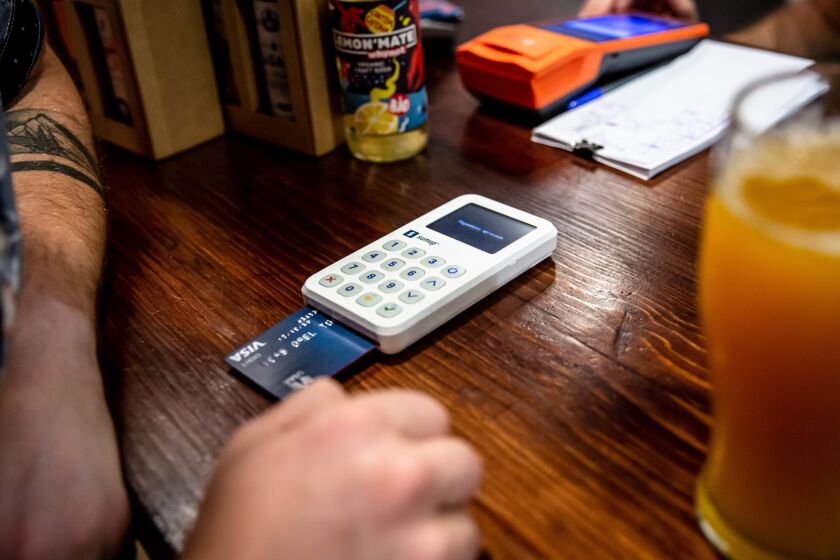Republicans and Democrats are negotiating a new coronavirus stimulus package, but there’s still no law on the books designed to erase the problems that prevented many stimulus payments from getting directly to recipients.
The two sides are still far apart on the large details — the House Democrats’ $3 trillion version is two months older and $2 trillion larger than the Senate Republicans’ $1 trillion package — with wide-ranging and typically rancorous disagreements on support for local governments and education.
But both parties are proposing direct payments to Americans, so that’s likely to be part of the final bill. Direct payments didn’t go well the first time, with nearly half of U.S. residents lacking a digital connection to the IRS, which facilitates payments on the front end, and a quarter of Americans who are underbanked or unbanked on the back end.
As a result, millions of Americans waited more than a month for checks, and at one point in late spring, weeks after the stimulus bill’s passage, different government reports reported that 30 million Americans had not received payments while 1.2 million dead people had (though it's possible that many dead people were eligible to receive funds because the legislation did not specifically prohibit them from doing so).
Neither new coronavirus stimulus proposal directly targets payment disbursement reform. The Republican version of the latest round of stimulus, released this week by Finance Committee Chair Sen. Chuck Grassley, R-Iowa, provides enhanced federal unemployment insurance at 70% of a worker’s previous wages, replacing the $600 per week from states that stops this week. There’s also direct stimulus payments of $1,200 for individuals or $2,400 for couples, and $500 per dependent.

The Democrats’ version, from May, includes payments of $1,200 per person and up to $6,000 for households, with other payments for essential workers who face health risks along with extensions of federal unemployment insurance through January.
In March, an initial version of the original stimulus package, the CARES Act, briefly included a direct digital connection between individuals and the Treasury, which would administer a public wallet. Generally called a “digital dollar,” the idea has been part of proposals in New York and in Congress from mostly liberal legislators, such as Rep. Maxine Waters, D-Calif., and Sen. Sherrod Brown, D-Ohio.
These proposed "digital dollar" bills are still active and distinct from coronavirus relief, but have not progressed to a vote. Most of the language around government payments in the new coronavirus stimulus packages covers relatively minute details on the parameters of the program rather than efficiencies in delivery.
As the pandemic has stretched on further into 2020, with more lockdowns and economic disruption predicted heading into the fall and winter, continuing to offer fee waivers has not always proved financially viable.
There are two key areas that CPA firms should closely watch to manage audit fees in 2020.
At least 39 states did not have enough money to pay all of their bills at the end of 2019, leaving them ill-prepared to shoulder the costs of the novel coronavirus pandemic, according to a new report.
“At this point, the only differences I see between the original CARES Act, the HEROES Act and the HEALS Act concern minutiae about tax rates, income eligibility requirements, talk of a payroll tax cut, etc.,” said Jeff Hinkle, the director of content for Polyient Labs, a Phoenix-based technology incubator. “But I have not seen any proposed improvements to the delivery methods.”
Writing for PaymentsSource, Hinkle has suggested a blockchain that enabled access to the Treasury — supporting a digital dollar, public P2P app, or central bank digital currency — could make payments less costly than paper checks, draw underbanked Americans into the financial system and would be easier to track.
Beyond the digital dollar plans, other politicians have suggested greater government use of blockchain. Reps. Trey Hollingsworth, R-Ind., and Darren Soto, D-Fla., in May sent a letter to the Trump administration stating that blockchain could speed innovation in finance and other industries and that the U.S. is held back by older laws that are hard to apply to emerging technology.
Blockchains and distributed ledgers support central bank digital currencies, a growing trend globally as central banks counter the influence of private stablecoin projects such as Facebook's Libra, as well as the growing influence of U.S. and Chinese companies like Facebook, Amazon and Ant.
The concept can also be applied to government stimulus, and as recently as this week the International Monetary Fund was pushing central bank digital currencies as a way to speed government payments.
In the U.S. there's more momentum for central bank digital currencies than in the past, though there are political differences, with Democrats generally supporting a closer connection between the Treasury and consumers and Republicans supporting a greater role for banks in distributing digital funds.
The current administration is less likely to support the concept, Hinkle says. The Treasury department did not respond to a request for comment.
"Enough influential lawmakers have expressed an interest in the digital dollar at this point," Hinkle said, referencing Trump's reported aversion to blockchain. "Banks would certainly be on board. I just don't think Mnuchin's Treasury Department has the appetite."






